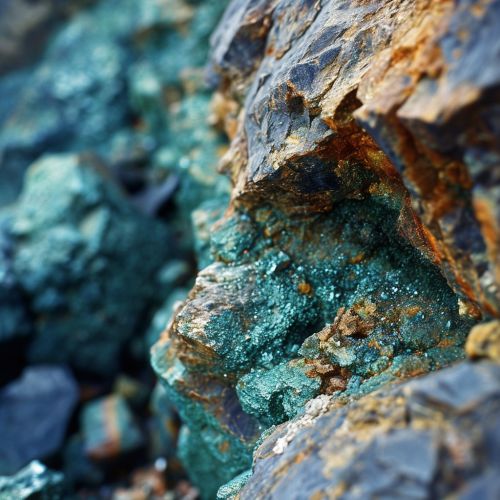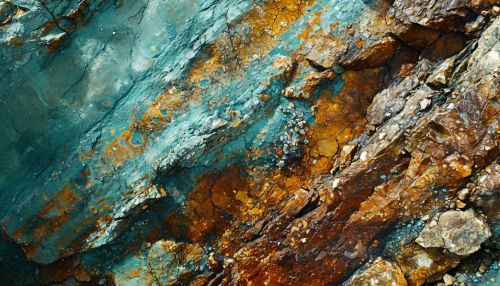Porphyry copper deposit
Introduction
Porphyry copper deposits are a type of copper deposit that are formed from hydrothermal fluids that originate from a voluminous magma chamber several kilometers below the deposit itself. Predating or associated with those fluids are vertical dikes of porphyritic intrusive rocks from which this deposit type derives its name. In later stages, circulating meteoric fluids may interact with the magmatic fluids.
Formation
The formation of porphyry copper deposits requires a specific set of geological conditions. The process begins when a column of magma rises from the mantle, causing a variety of reactions to occur as the magma cools and differentiates. As the magma cools, the early formed minerals will settle to the bottom of the magma chamber. These minerals can be sulfides, which are minerals that contain sulfur, such as pyrite (FeS2). The sulfides can contain gold, copper or other valuable metals.


Characteristics
Porphyry copper deposits are characterized by low-grade ores, with a large volume and a deep ore body. This makes the deposits most suitable for large-scale, open-pit mining. The low grade of the ore implies that large amounts of rock have to be moved and treated in order to recover the copper, making the mining process more complex and expensive.
Distribution
Porphyry copper deposits are found worldwide, but the greatest concentration is in western South America and the western United States. Other significant locations include the Andes in South America, the North American Cordillera in Canada, the Southwest Pacific, and Eastern Europe.
Economic Importance
Porphyry copper deposits account for a large proportion of the world's copper production. The deposits also yield significant amounts of molybdenum, gold and silver. For this reason, they are considered a significant source of critical minerals.
Exploration and Mining
Exploration for porphyry copper deposits typically involves geological mapping, geochemical sampling, and drilling. Once a deposit is discovered, a variety of mining methods can be used to extract the copper, including open-pit mining and underground mining.
Environmental Impact
The extraction of porphyry copper deposits can have significant environmental impacts, including the creation of large open pits, the generation of large amounts of waste rock and tailings, and the potential for acid mine drainage. These impacts require careful management to prevent harm to the environment and local communities.
